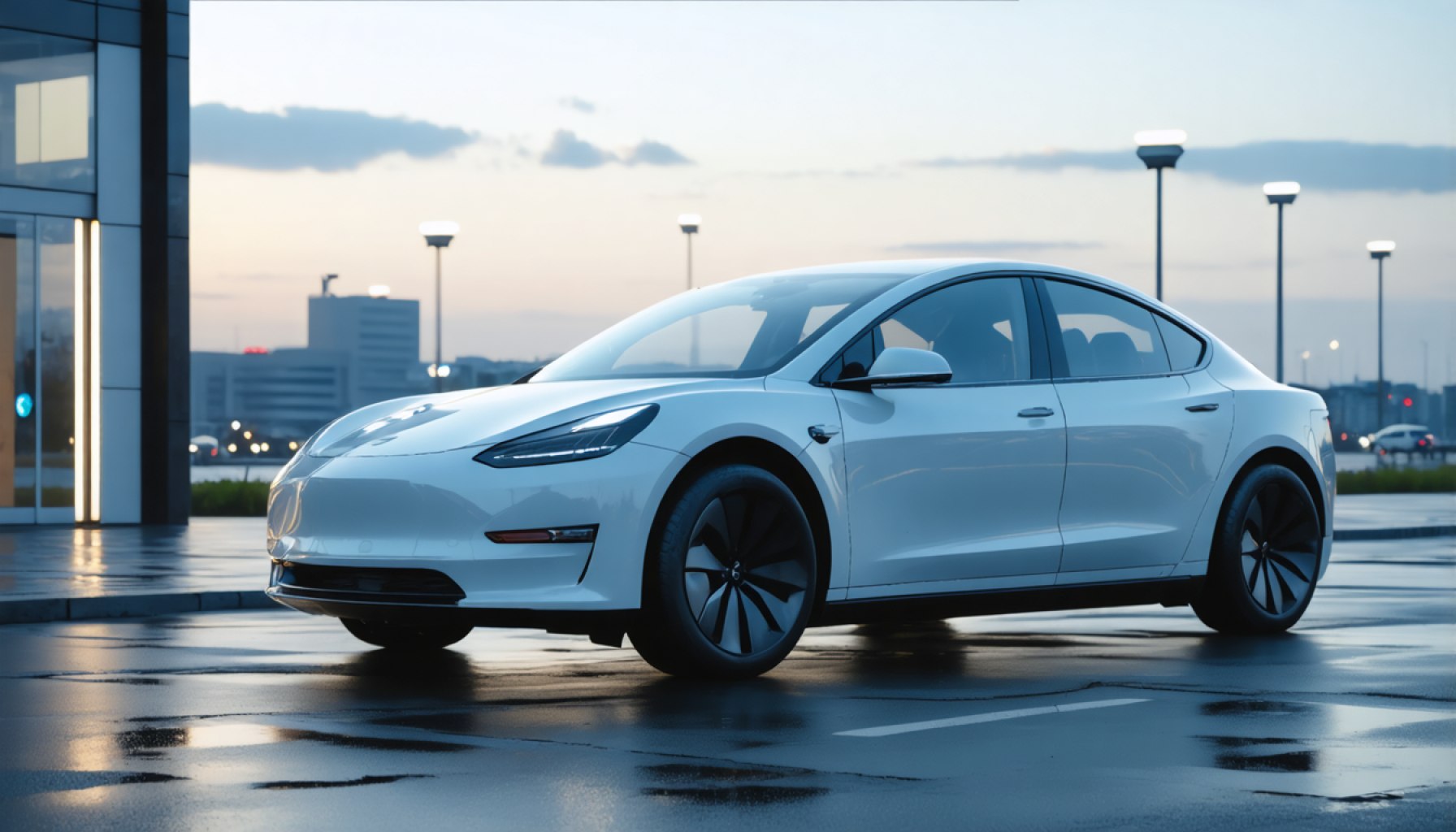- Russia is advancing its electric vehicle (EV) infrastructure, requiring new residential complexes to reserve at least 5% of parking for EVs, with each building having at least one spot.
- Charging stations are mandated to have a minimum output of 11 kilowatts, supporting urban areas in adopting cleaner transportation.
- The plan includes expanding the charging network to 20,000 stations and increasing EVs on the road to 150,000 by 2030.
- Moscow offers incentives like purchase discounts and tax breaks to encourage EV adoption, although sales have faced a recent decline.
- Geographic and infrastructural challenges slow EV expansion, with remote regions lacking charging hubs and heavy reliance on imported components.
- Russia’s transition, hampered by economic and geopolitical complexities, remains crucial for its role in the global shift to sustainable transportation.
Amid sprawling steppes and snow-clad cityscapes, Russia stands on the brink of an automotive revolution: the electrification of its roads. Yet, in a land renowned for its epic winters and vast distances, the shift to electric vehicles (EVs) encounters hurdles as imposing as the Siberian terrain.
The Russian Ministry of Construction has made a pioneering call to arms—mandating that newly designed residential complexes reserve at least 5% of their parking spaces for EVs, ensuring each building has at least one spot. To power these electric thoroughbreds, the ministry dictates that charging stations sport a minimum output of 11 kilowatts. It’s a blueprint setting the stage for urban areas to embrace cleaner, quieter streets.
Peering into the nation’s past, the Russian government’s track record with EV infrastructure reveals aspirations to multiply charging stations by 2030. With metropolises like Moscow and St. Petersburg leading the charge, the new parking standards reflect a patchwork of policies aimed at knitting together an EV-friendly urban environment.
This incremental rollout is more than bureaucratic edict; it’s a relief package for EV buyers. Moscow has dangled incentives—purchase discounts, tax breaks, and toll exemptions—designed to lighten the economic load on eco-conscious consumers. By 2030, the government envisions over 150,000 zero-emission vehicles racing across Russian roads, backed by a vast network of 20,000 charging stations.
Despite these grand ambitions, Russia’s electrification wave is more ripple than tide. A total of just over 17,800 electric vehicles were sold in 2024—a notable 26.4% increase from the previous year, yet dwarfing in comparison to China’s bustling EV market. The initial momentum, boasting a 4.7-fold uptick in sales during 2023, has since ebbed dramatically. Early 2025 saw sales sputter, dropping a staggering 68% from the previous year, highlighting a need for sustained policy and infrastructure investment.
Russia’s expansive wilderness introduces logistical nightmares for EV proliferation, with regions beyond major cities often bereft of charging hubs. Coupled with a still-developing automotive sector and reliance on imported components—primarily from China—the journey to electrification is fraught with challenges.
Manufacturing autonomy remains a distant dream, as Russian firms rely heavily on assembling imported kits, a process that offers little in the way of cost-effectiveness. The geopolitical climate, marked by ongoing tensions and intermittent policies limiting auto imports, further clouds the horizon for potential investors eyeing local production.
For all its challenges, Russia’s brush with electrification is a critical pivot in the evolving narrative of global automotive transformation. Overcoming economic constraints and geographic obstacles could transform this current trickle into a flow of innovation and environmental stewardship.
The takeaway? Russia’s EV evolution, while hindered by cold realities and political intricacies, represents an essential chapter in a journey towards cleaner, sustainable mobility. Steering through its limitations, the nation must ask: how can it balance these obstacles to ensure that the current electrification trend does not stall on the icy roads ahead?
Are Russia’s Roads Ready for an Electric Vehicle Revolution?
Introduction
Amidst the vast expanses and icy landscapes of Russia, a transformative shift in the automotive landscape is underway: the electrification of its vehicular fleet, poised to revolutionize transportation. Despite the challenges posed by its harsh winters and immense geographical size, Russia is diligently working to embrace electric vehicles (EVs) as part of its sustainable future.
—
Exploring Russia’s Auto Electrification Path: Challenges and Opportunities
1. Policy and Infrastructure Development
– The Ministry of Construction’s mandate for new residential complexes to designate 5% of parking for EVs, coupled with at least one charging spot per building, sets a foundational stage for urban electrification. These efforts are critical for promoting the use of EVs in densely populated areas.
– Moscow and St. Petersburg are at the forefront of these changes, introducing incentives such as purchase discounts, tax exemptions, and toll waivers. These financial motivations aim to incentivize eco-conscious consumers to invest in EVs.
2. Current Market Dynamics
– Although EV sales rose by 26.4% to over 17,800 units in 2024, the market momentum has waned. The drop in sales by 68% in early 2025 suggests deeper economic or infrastructure limitations need addressing. Comparatively, these numbers still pale in contrast to the rapid expansion seen in countries like China.
3. Challenges in Geographic and Climatic Factors
– Russia’s vast, less-populated regions face significant hurdles due to a lack of charging infrastructure, which is primarily established in urban areas.
– The country’s notorious winters require more robust battery technology capable of maintaining efficiency in cold conditions—a technological aspect still under scrutiny and development.
4. Manufacturing and Economic Limitations
– Domestic manufacturing is heavily reliant on imported components, particularly from China, posing cost and supply chain challenges.
– Geopolitical tensions and restrictive import policies further complicate localization strategies and investment in domestic EV production.
5. Industry Trends and Predictions
– Forecasts suggest an ambitious target of 150,000 zero-emission vehicles supported by 20,000 charging stations across the nation by 2030. Achieving this will necessitate substantial governmental and private sector collaboration.
– As global demand for sustainable practices increases, Russia’s role in the EV market could expand, provided it overcomes current logistical and economic barriers.
—
Real-World Applications and How-Tos
– For Consumers:
– When considering an EV, investigate available incentives like tax breaks or toll exemptions in larger cities such as Moscow.
– For Developers:
– Incorporate space for charging stations in new projects early in the development phase to comply with government mandates.
– For Investors:
– Partner with established international EV manufacturers to leverage shared technology solutions and explore opportunities in cities.
—
Conclusion: Strategic Recommendations
To ensure a successful transition to electric mobility:
– Invest in Infrastructure: Prioritize expanding charging networks beyond urban centers to support long-distance travel.
– Enhance Local Manufacturing: Reduce reliance on imports by fostering domestic component production and incentivizing foreign technology transfer.
– Encourage Innovation: Support research focused on developing cold-weather battery technologies, crucial for Russia’s climate.
– Strengthen Policies: Ensure continued financial incentives and clear legislative support to reassure consumers and investors of the government’s commitment.
For further insight into global EV advancements, explore resources from Tesla and Volkswagen.
With focused strategies, Russia can transform its initial steps into a formidable stride towards a cleaner, more sustainable automotive future.












